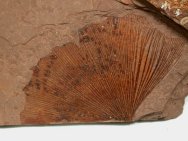McAbee Fossil Beds
|
Fossils of the Tranquille Shale, British Columbia, Canada |
The page within: |
|
The fossil site is east of the town of Cache Creek, British Columbia along Highway 97. The fossils record flora and fauna from a 50 million year old forest that grew near and in the mountains surrounding a lake. The leaves, flowers, seeds and insects of the forest were transported by wind, rivers and streams into the lake, where they sank to the bottom, were covered by fine sediments and diatoms. The fine sediments enabled fossilization by carbonization, preserving many fine details, making possible detailed comparisons of the fossils to modern counterparts. Some of the McAbee fossils are the first occurrence known of extant plant species, providing valuable data for the study of plant evolution and Eocene paleoenvironments. Spruce, fir and pine trees grew at the higher elevations, with needles, seeds and cones transported to the lake below. Elm, birch, alder and beech trees dominated the flora lower down and closer to the lake, leaving exquisite fossil leaves and plant reproductive parts. Some two thirds of the fossils are from plant families still extant, but a large number of rarer leaves have yet to be indentified. Known and unknown plant species number more than 100, supporting the theory that the Eocene forests of British Columbia were more diverse that the modern forests that grow in modern times.
|
|
||||||||||||||||||||||||||||||
|
Fossil
Museum Navigation:
Home Geological Time Paleobiology Geological History Tree of Life Fossil Sites Fossils Evolution Fossil Record Museum Fossils |







